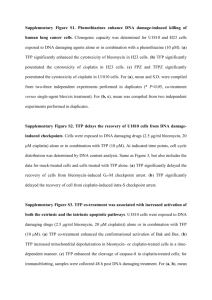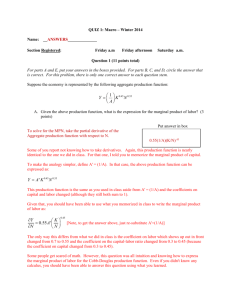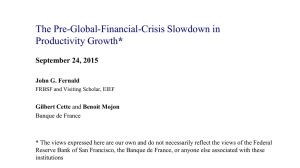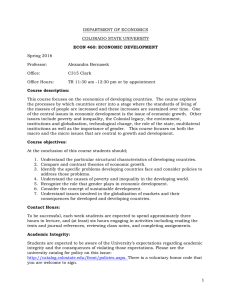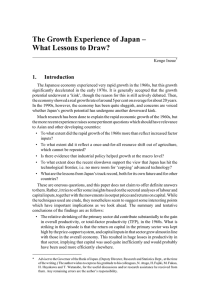Rate of Actual Population Growth
advertisement
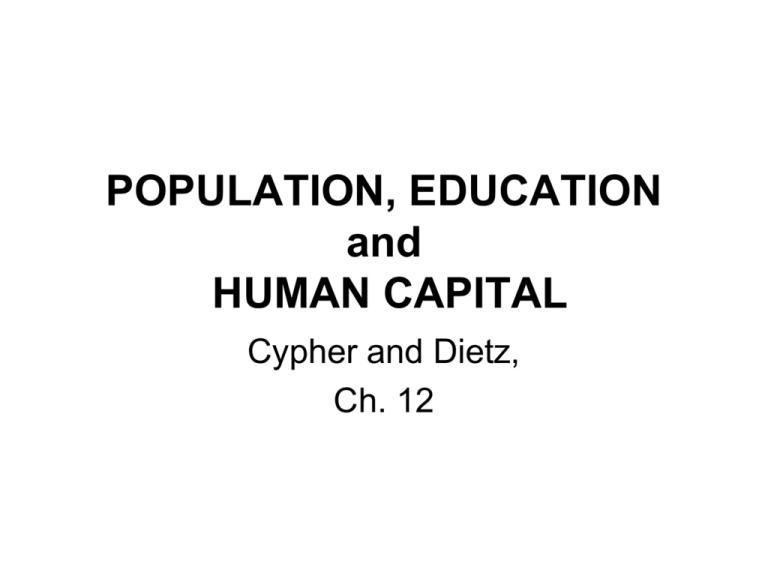
POPULATION, EDUCATION and HUMAN CAPITAL Cypher and Dietz, Ch. 12 The Population Problem: What is it? Rapid population growth can cause the total population to exceed a nation’s productive capacity so that real income per person either falls or rises unnecessarily slowly. %∆GNP per capita = %∆GNP - %∆population Rate of Natural Population Growth (pn): Definition pn = annual %∆ in natural population = (crude birth rate – crude death rate) 10 Crude birth rate = # of live births per 1000 population Crude death rate = # of deaths per 1000 population Rate of Actual Population Growth (pa): Definition pa = annual %∆ in actual population = pn + m where; m = immigrants per 100 population – emmigrants per 100 population CBRs, CDRs, and the natural rate of population growth Source: Cypher & Dietz (2004): p. 354 5 The demographic transition Source: Cypher & Dietz (2004): p. 356 6 Fertility rate: Definition F = total # of children that the average woman is expected to have F = f (y, e, S) y = per capita income e = # of females per 100 males in primary school S = social, cultural, political factors in the country such that fy < 0 and fe < 0; but relationship between F and S is indeterminate. Population Growth and Income per Capita: What is the relationship? Malthus argued: income ↑ → population growth ↑ BUT data shows: income ↑ → population growth ↓ i.e. fy < 0 How to explain? Population Growth and Income per Capita: In economies with lower levels of income, children play multiple roles for parents: • They act as additional source of labor, contributing to family income; • Older girls help with child care and household tasks; • Children act as a form of insurance for parents at old age; • Infant mortality rates are higher; hence families have more children to cover themselves for such risk In economies with higher levels of income, • Most of the above factors do not exist as a motivation for having children; • Rather children are seen as an entertainment for parents; • and also to carry on the family name; • The opportunity cost to women of having children is much higher. (this is also fe < 0) What is Human Capital? • Labor not as a homogenous factor of production; but a differentiated and moldable input into production, i.e. as human capital. • Hence production function is revised from Y = A f(K, L) → Y = A f(K, L, H) • Human K is not a sufficient, yet a necessary factor for growth. • World Bank study (1993) finds that the level of primary education in 1960 predicted as high as 58% (Japan) to 87% (Thailand) share of growth experienced by the high performance east Asian economies (HPAEs) in 1960-85. • High human K increases the ability of HPAEs to adopt, adapt and indigenize the ever-expanding pool of “best practice” technological knowledge, i.e. keep pace with the world production possibilities “best practice” frontier. Total Factor Productivity TFP TFP = %∆ output – [%∆K*Kshare in inputs + %∆L*Lshare in inputs] Any positive remainder is interpreted as the increase in TFP. TFP measures the synergistic effort of combining an economy’s physical K and its human K which results in productivity increases beyond the contribution of increases in physical quantities of the individual inputs. According to World bank HPAEs’ rate of TFP is twice that of any other less-developed region. 1960-87: 28% of HPAEs’ growth due to TFP growth 14% of S. Asia’s growth due to TFP growth 0% of Africa & LAC growth due to TFP growth Education and human capital accumulation Source: Cypher & Dietz (2004): p. 364 12 Human Capital as an example of Market Failure and the need for Public Subsidy 1. Public benefits of education > Private benefits of education Even those who do not have children gain from positive externalities of the children who do receive education 2. In developing countries no financial markets for the poor HHs to borrow to capitalize future expected earnings from education; so the market failure problem is even greater than that caused by the divergence between private and social benefits. 3. Efficiency and Equity grounds is another rationale for subsidizing primary and secondary education. Dependency ratios, population age profile, and public expenditure on education Source: Cypher & Dietz (2004): p. 370 14




